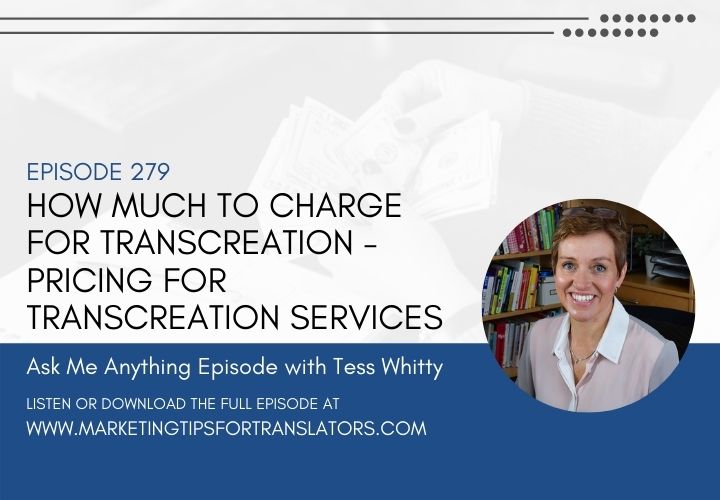
Why you should tackle your marketing tasks each day before you begin translating
11/28/2016
Episode 113: Public speaking for freelance linguists – Interview with Jonathan Downie
12/12/2016I have received many questions for the Ask-Me-Anything-episodes, and the majority of them have been about finding clients. In this episode I start answering some of these questions. It would be nice to have a magic pill, or a strategy that worked for every situation, but unfortunately that is not the case. You have to adapt to each individual situation and go from there. But, there are some tips that you can use to get going and some of them are covered here.
Useful things mentioned in this episode:
- Where to find clients – depending on what kind of clients you want
- Finding clients abroad
- Whether to do voluntary translation or interpretation work
- How to get your first clients when you have limited experience
- How to find and contact new clients without seeming too obnoxious
Useful links related to this episode:
- Alessandra Vita’s post – How can freelancers find new clients?
- Christian Salajan’s post – 12 tips for getting direct translation clients
- Corinne McKay’s post – Finding your first translation clients
- Recommended books for translators
Now dear listeners, do you have any other answers or tips on how to find new clients. Please share in the comments below. Freelance translators at every stage in their business can struggle with the question of where to find clients and how to win both their business and their loyalty. I discuss this in great detail in the Marketing Cookbook for Translators. There are many strategies and solutions and I hope you find one that works well for you.
A special thanks to Catherine Metcalfe for editing the show notes.
This podcast is sponsored by:
 Wordfinder.com – The Words you want, anytime. Go to Wordfinder.com for a free 30 day trial!
Wordfinder.com – The Words you want, anytime. Go to Wordfinder.com for a free 30 day trial!
![]() SDL Trados Studio 2017 is here – designed to make the difference. The latest version of the world’s #1 translation environment includes AdaptiveMT, a self-learning machine translation engine which adapts to a translator’s style, content and terminology and upLIFT technology, which introduces matching based on fragments, meaning translators can get more matches from their translation memory than ever before. Find out what’s new in SDL Trados Studio 2017 at www.translationzone.com.
SDL Trados Studio 2017 is here – designed to make the difference. The latest version of the world’s #1 translation environment includes AdaptiveMT, a self-learning machine translation engine which adapts to a translator’s style, content and terminology and upLIFT technology, which introduces matching based on fragments, meaning translators can get more matches from their translation memory than ever before. Find out what’s new in SDL Trados Studio 2017 at www.translationzone.com.
Podcast: Play in new window | Download




